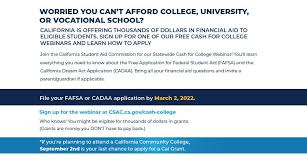
Social emotional learning activities help students develop a healthy perspective on themselves and others, making them better learners and citizens. These activities have long-lasting positive effects and can be used in educational settings. Teachers can use social emotional learning programs for their students to improve the school's environment, regardless of whether they are in elementary, middle or high school.
Get to know your students to start your program. Watch their expressions and behavior. Understand their relationships with other students and at home. It is possible to begin to spot small cues such as facial expressions that indicate they need more practice in social skills.
First, recognize the emotions that are common in the classroom. You may feel confused, sad, angry or anger in class. Talk to students about how to deal with these emotions. Ask them to make a list of their most common feelings, as well as the words that describe them.

You can then create an emoji list for students to easily identify their emotions. It's also a good idea to print out a series of cards, which include pictures and words that describe different emotions. Students can attach the cards to their ring to track their moods.
Role-play scenarios can be another option. You could have students make faces that represent their emotions during a story. Encourage them to search for a friend that they feel close to. This will enable them to discover how they feel about a certain color or character.
Twinkl's social- and emotional learning activities are great for anyone with digital resources like a tablet or a computer. There are many social and emotional tools available from Twinkl, all of which can be downloaded as PDF files. These worksheets are both instructional and independent work. Twinkl digital resource will help you to teach social-emotional skills to students.
Encourage your students to write their own stories as you work together. This will enable them to appreciate empathy and see how it can help the classroom. Stories can also be used to teach vocabulary and comprehension skills.

Adding these types of activities to the curriculum will help students build an emotional tower to support their academic success. Students can learn to manage their emotions and make healthy decisions. They also have the opportunity to build strong relationships with fellow classmates. Doing this will help improve the culture in your classroom and increase academic performance.
It is possible to teach empathy to students by including random acts or kindness in your classroom. This can be accomplished through a morning meeting or daily check-in. Students can build friendships in and out of the classroom when they show kindness to one another. Aside from the benefit to the community, it will teach students the value and positive impact of kindness.
FAQ
What factors should I consider when choosing a major?
The first step is to decide whether you prefer to enter a particular profession straight away or attend college. Next, you need to make a list listing your talents and interests. There are many things you might enjoy reading, listening or watching music, talking to others, doing housework, or even playing sports. Your talents could include singing, writing, painting, sewing, crafting, cooking, baking, cooking, woodworking and gardening. Once you've identified your interests and talents you can use them to guide you when choosing a major.
You might be interested in art history and fine arts if you are looking to become an artist. Biology is a great option if you love animals. Pre-medicine, medical technology and medicine are options for those who want to be doctors. Computer science or computer networking might be a good choice if you are looking for a career that involves computers. There are many options. Think about what you want to do.
How much does homeschooling cost?
Homeschooling comes with no fees. Some families charge between $0-$20 per lesson. Some families offer services for free.
It takes effort and dedication to homeschooling. Parents should be able to dedicate enough time to their children.
They also need to have access book, supplies, books, and other learning resources. Homeschoolers are often required to attend community events and participate in programs that complement their curriculum.
Parents should think about transportation costs, tutors, and other activities.
Homeschoolers should also plan ahead for vacations, field trips, and special occasions.
What is the main difference between schooling and college?
Schools are usually divided into classes (or grades), with a teacher who is responsible for teaching a specific class. Colleges are larger organizations that offer more specialized programs and often include university-level courses. The majority of schools focus on core subjects, while colleges offer more specialized programs. Both levels of education are designed to prepare students for higher-level study.
How long should I spend preparing for college?
The amount of time spent preparing for college depends on how much you plan to devote to your studies. If you plan to attend college immediately upon completing high school, you should start taking some college preparation courses now. If you are planning to leave school for a while before you can attend college, it is probably not necessary to start planning.
You should discuss your plans with your parents and teachers. They may suggest certain courses of study. You should keep track of which courses you took and what grades you got. This way, you'll know exactly what you need to accomplish next year.
What are the differences between early childhood education?
There are many ways that early childhood education can be described. These are the most popular:
-
Preschool - Children ages 2 to 5
-
PreKindergarten- Children from 4-6 years of age
-
Head Start/Headstart for Children Ages 0-3
-
Day Care/ Daycares: Children 0-5
-
Child Care Centers – Children aged 0-18
-
Family Childcare - Children between 0 and 12 Years Old
-
Home Schooling - Children ages KG to 16
Should I specialize in one subject or branch out?
Many students choose to concentrate on one subject (e.g. English History and Math) rather that branching into several subjects. It's not necessary to be a specialist. You could, for example, choose to specialize in surgery or internal medicine if you are considering becoming a physician. You can also choose to be a general practitioner, specializing either in pediatrics or family practice, psychiatry, gerontology, or neurology. You could focus on sales, marketing, finance, research, and management if you are interested in a career in business. The decision is up to you.
Is it hard to be a teacher?
Being a teacher is a huge commitment. You will need to devote a significant amount of time to your studies.
While completing your degree, you can expect to work approximately 40 hours per week.
A job that is flexible with your schedule is another important consideration. Many students report difficulty finding part-time jobs that work around their school schedules.
When you are hired for a full-time job, you will most likely be required to teach classes during the school day. Sometimes, you may need to travel to other schools during the week.
Statistics
- Data from the Department of Education reveal that, among 2008 college graduates, 92.8 percent of humanities majors have voted at least once since finishing school. (bostonreview.net)
- In most developed countries, a high proportion of the population (up to 50%) now enters higher education at some time in their lives. (en.wikipedia.org)
- And, within ten years of graduation, 44.1 percent of 1993 humanities graduates had written to public officials, compared to 30.1 percent of STEM majors. (bostonreview.net)
- They are more likely to graduate high school (25%) and finish college (116%). (habitatbroward.org)
- Globally, in 2008, around 89% of children aged six to twelve were enrolled in primary education, and this proportion was rising. (en.wikipedia.org)
External Links
How To
How do I apply for scholarships?
Before you apply for scholarship funding, ensure that you are eligible. Only those who meet the criteria for scholarship funding are eligible.
If you are financially disadvantaged, you may be eligible for a grant. If you are studying a vocational training program, you can qualify for a grant to help pay your bills. You may also be eligible for a grant if you belong to a minority group.
Once you have determined whether you are eligible for a scholarship type, you can apply.
Online, in person or over the telephone, it is possible to apply. The application process varies depending on the type of scholarship.
Some scholarships require essays that describe you and explain why you desire the money. Others ask questions like, "Why did you choose this major?"
Most scholarships require you to fill out an application form and send supporting materials.
Your scholarship provider will examine the information that you submit. If you are chosen, you will receive an email or postal notification.
You might be eligible for another scholarship even though you are not chosen. Contact your scholarship provider for details.